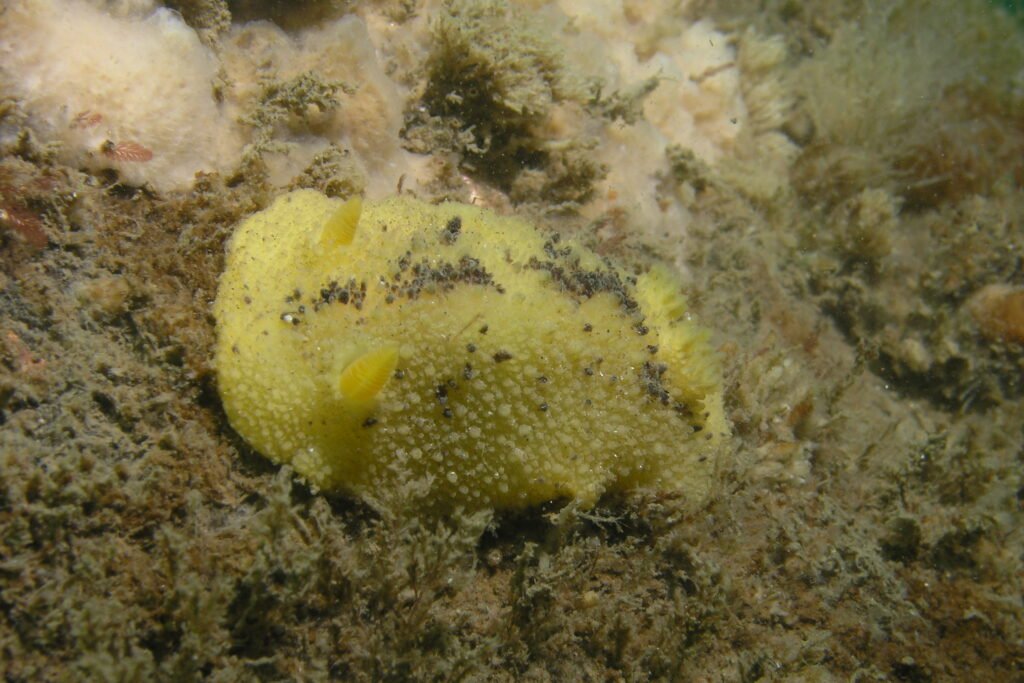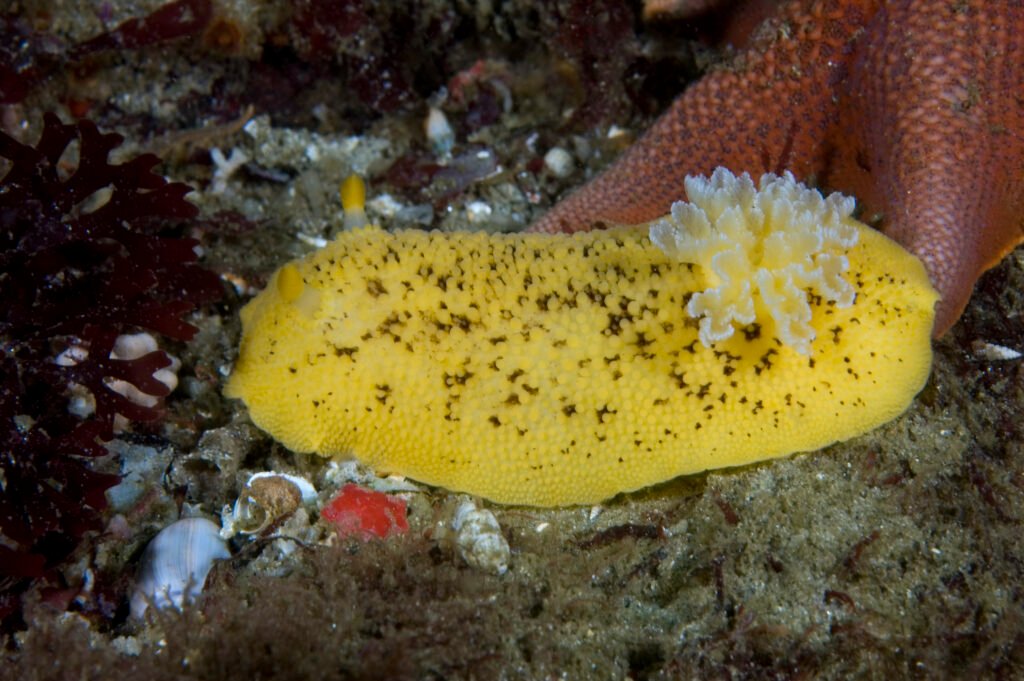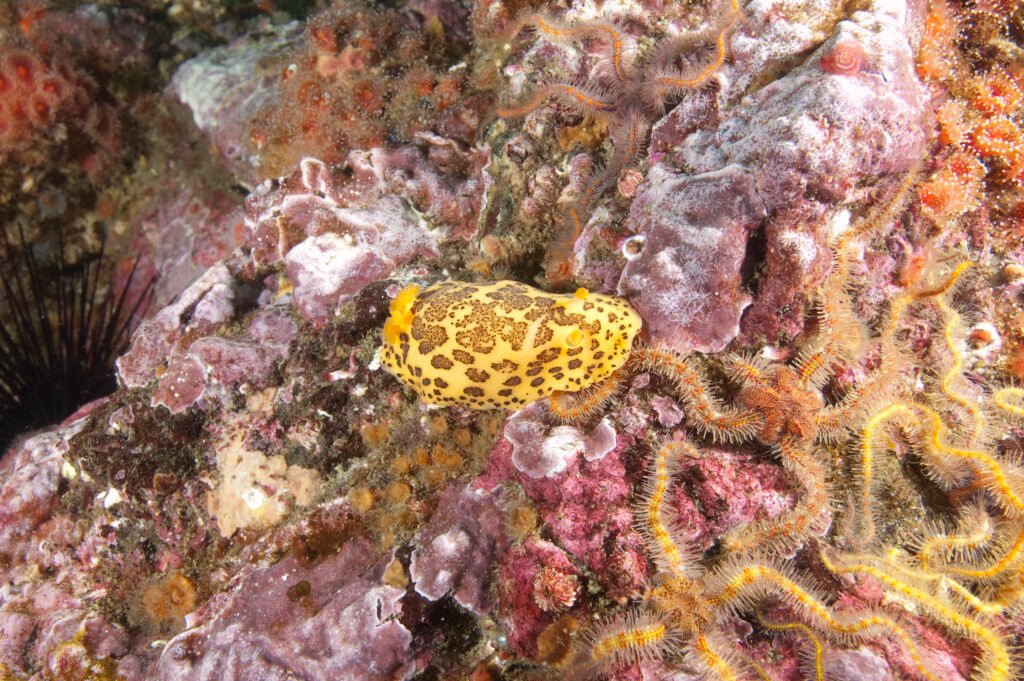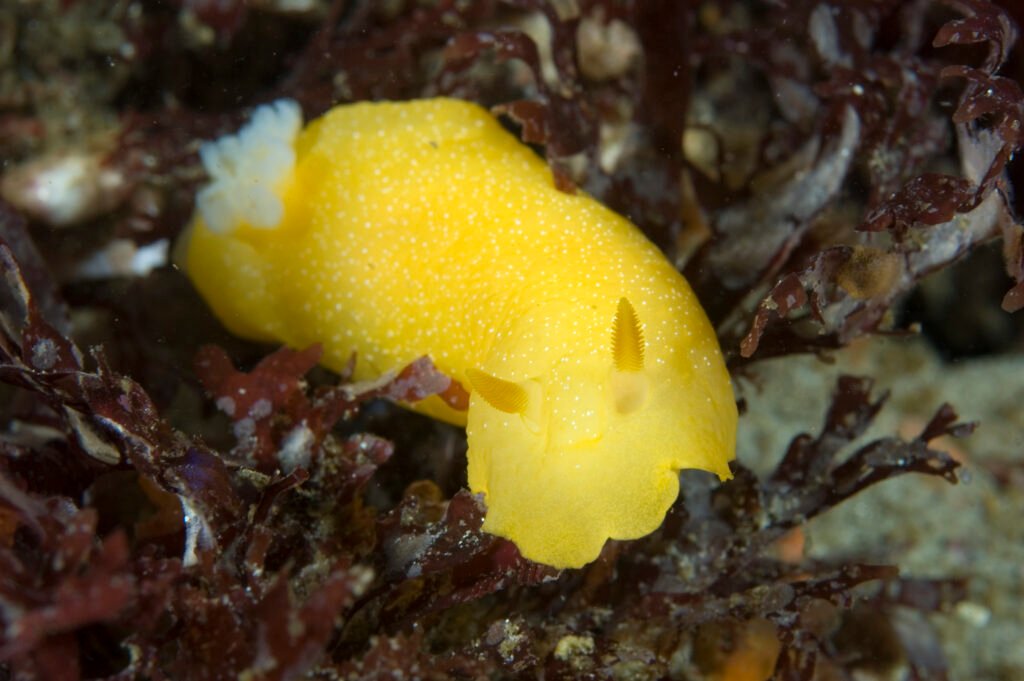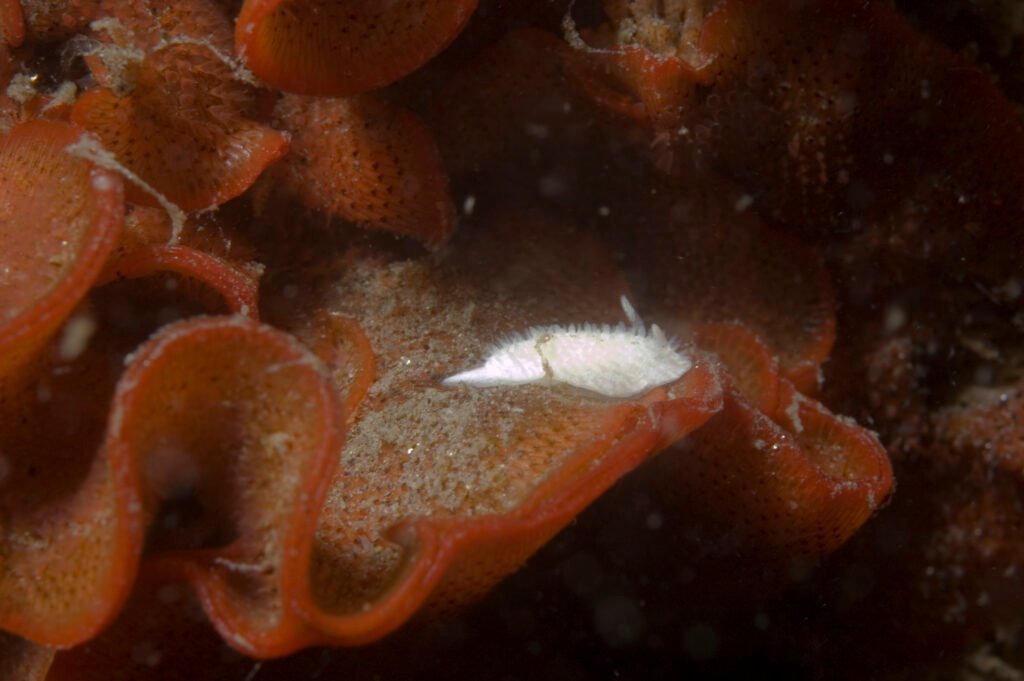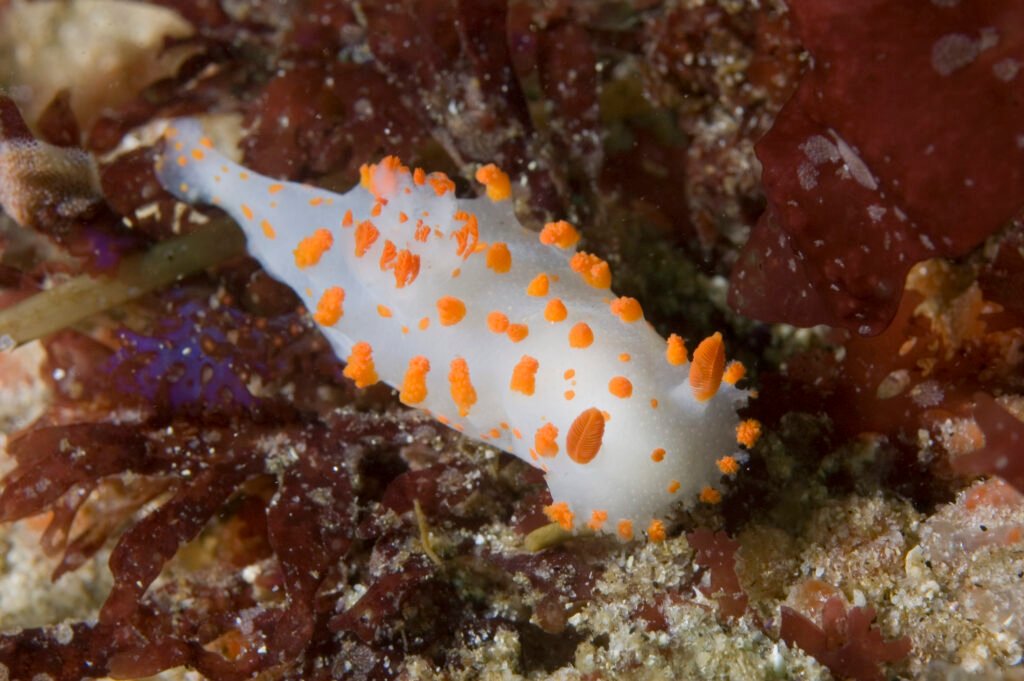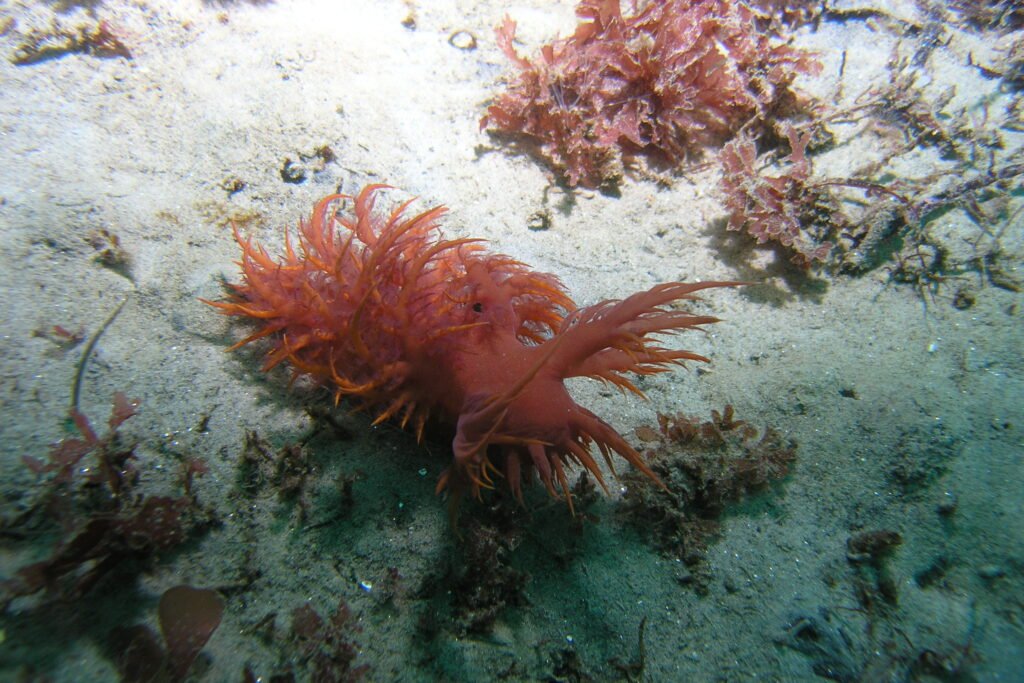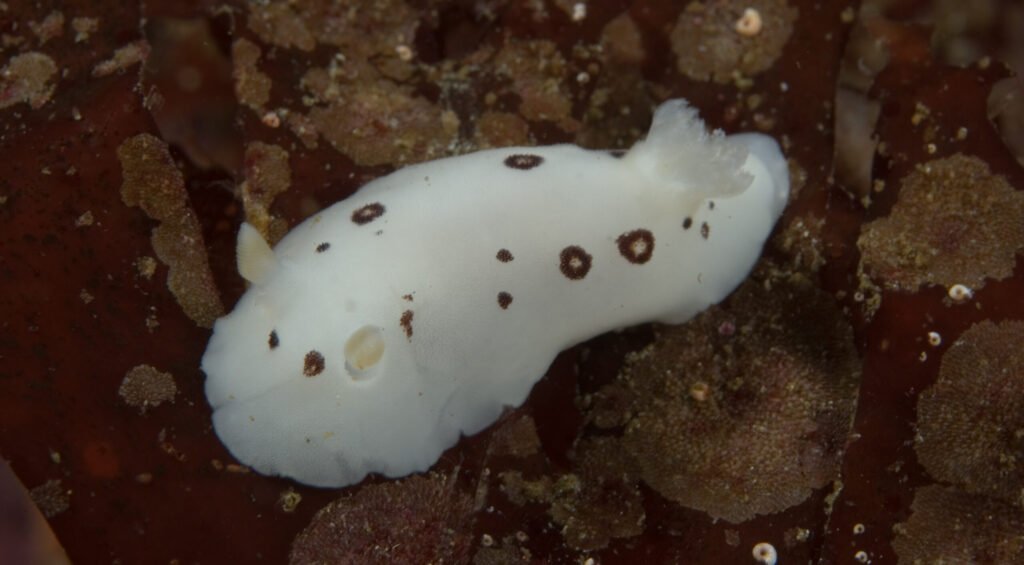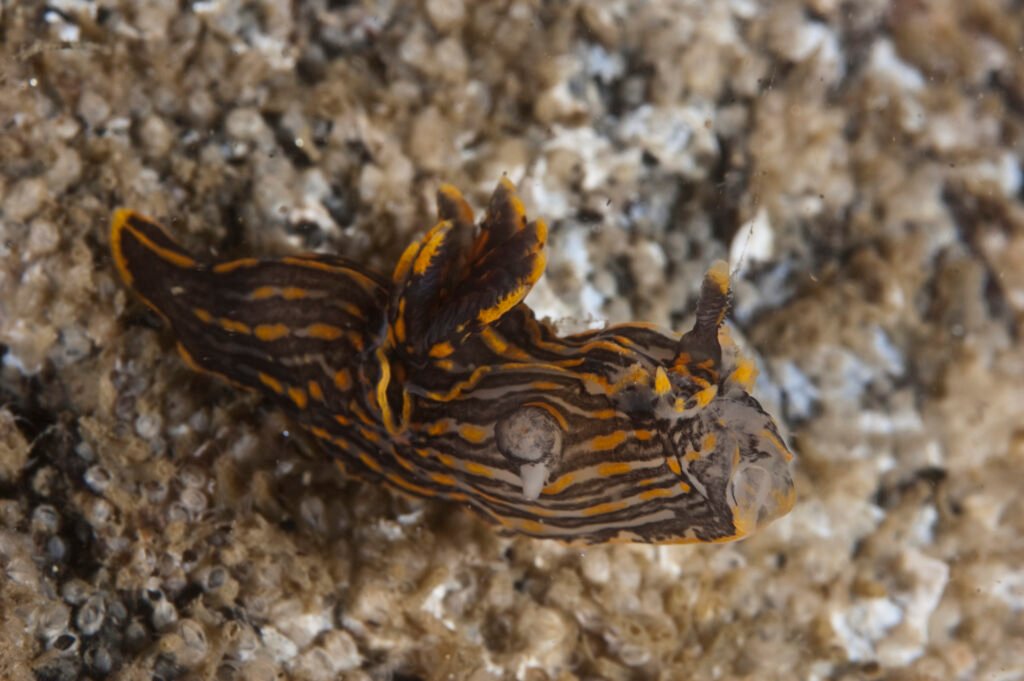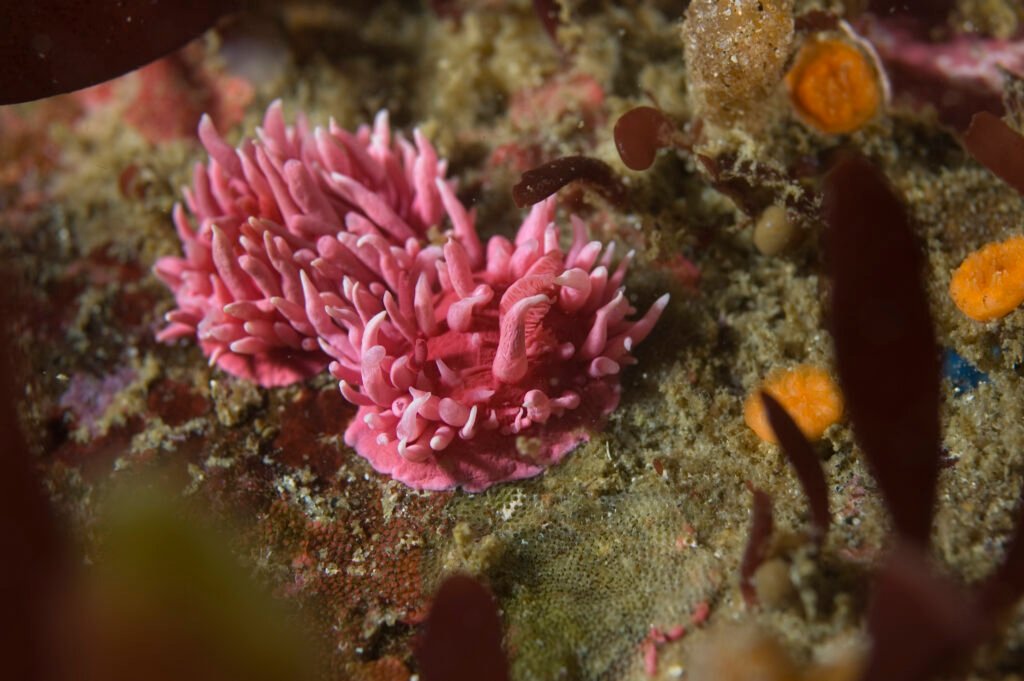Physical Description
The Monterey Dorid is a sizable dorid, ranging from 50 to 150 mm in length. Its body is predominantly yellow, with dark pigment concentrated on its tubercles and extending to the dorsal surface. The species features yellow gills with seven branchial plumes.
Habitat and Geographical Range
This species is moderately common along the eastern Pacific coast, particularly in rocky habitats where it can be found. Its distribution may vary within this geographical range.
What They Eat and How They Breed
The Monterey Dorid sustains itself by consuming encrusting sponges, which likely form a significant portion of its diet. Like other nudibranchs, it likely reproduces through mating behavior, with individuals exchanging sperm. After fertilization, females lay eggs, typically in gelatinous masses on suitable substrates.
Similar Nudibranchs
There are several species of yellow dorid nudibranchs found in Monterey. The Monterey dorid is most easily identified by yellow gills and dark spots on the tips of the tubercles. For species often mistaken for the Monterey dorid, check out these links.
Sea Lemon
Explore the fascinating Sea Lemon, featuring a vibrant color range and distinctive tubercles, found along the eastern Pacific coast.
Mulliner’s Dorid
Explore Mulliner’s Dorid, a large nudibranch with distinctive yellow features and irregular brown blotches on its mantle, found along the eastern Pacific coast.
White-Spotted Dorid
Discover the fascinating characteristics of the White-spotted Dorid, a marine species found along the eastern Pacific coast, boasting distinctive physical traits and subtle color variations.
